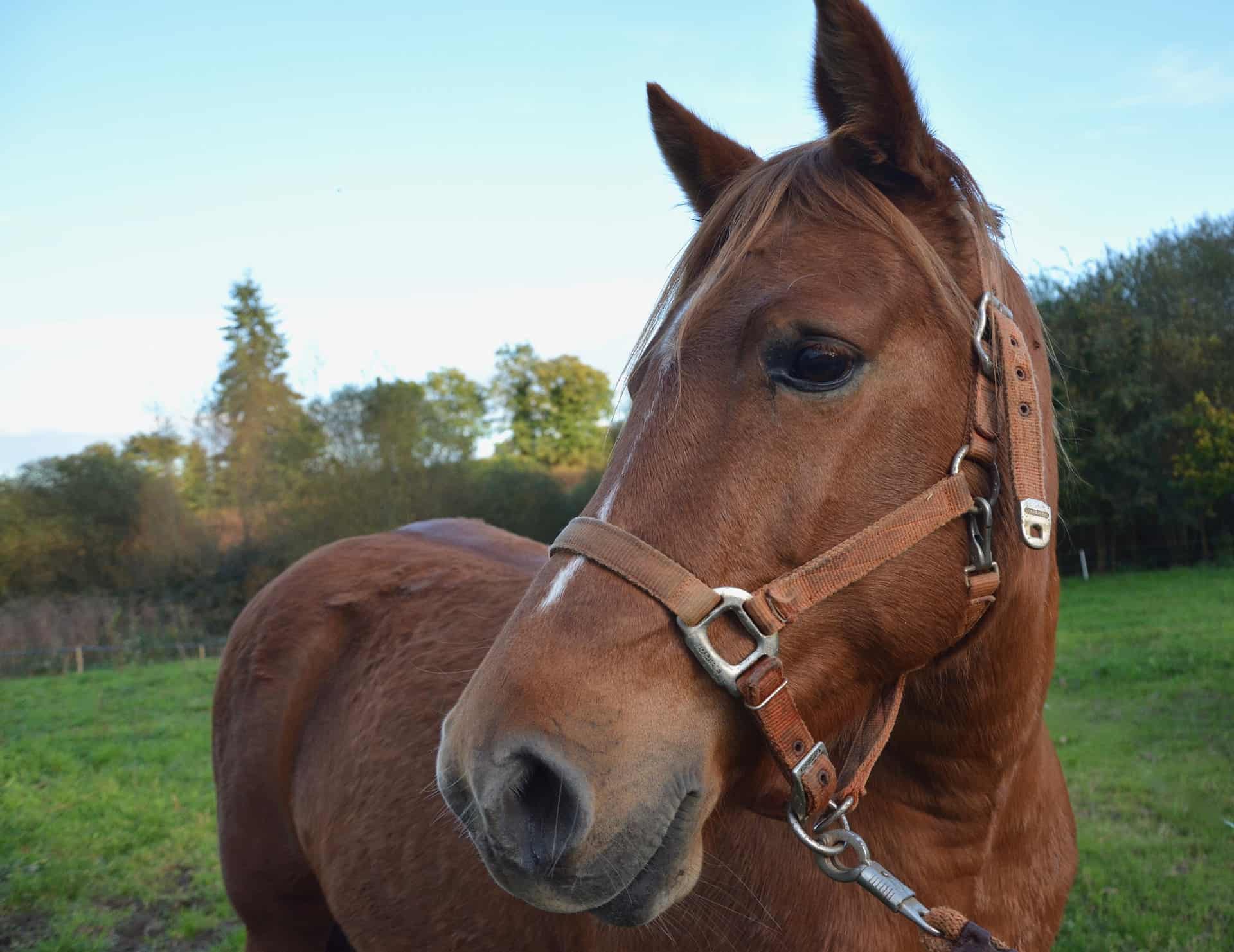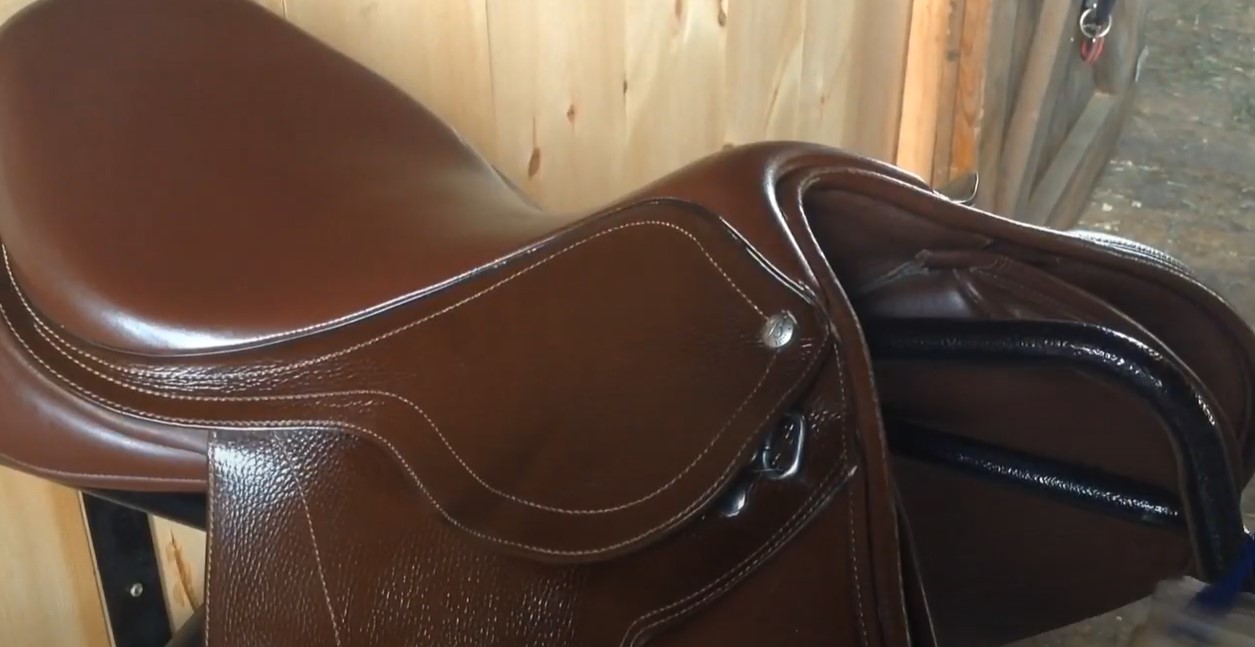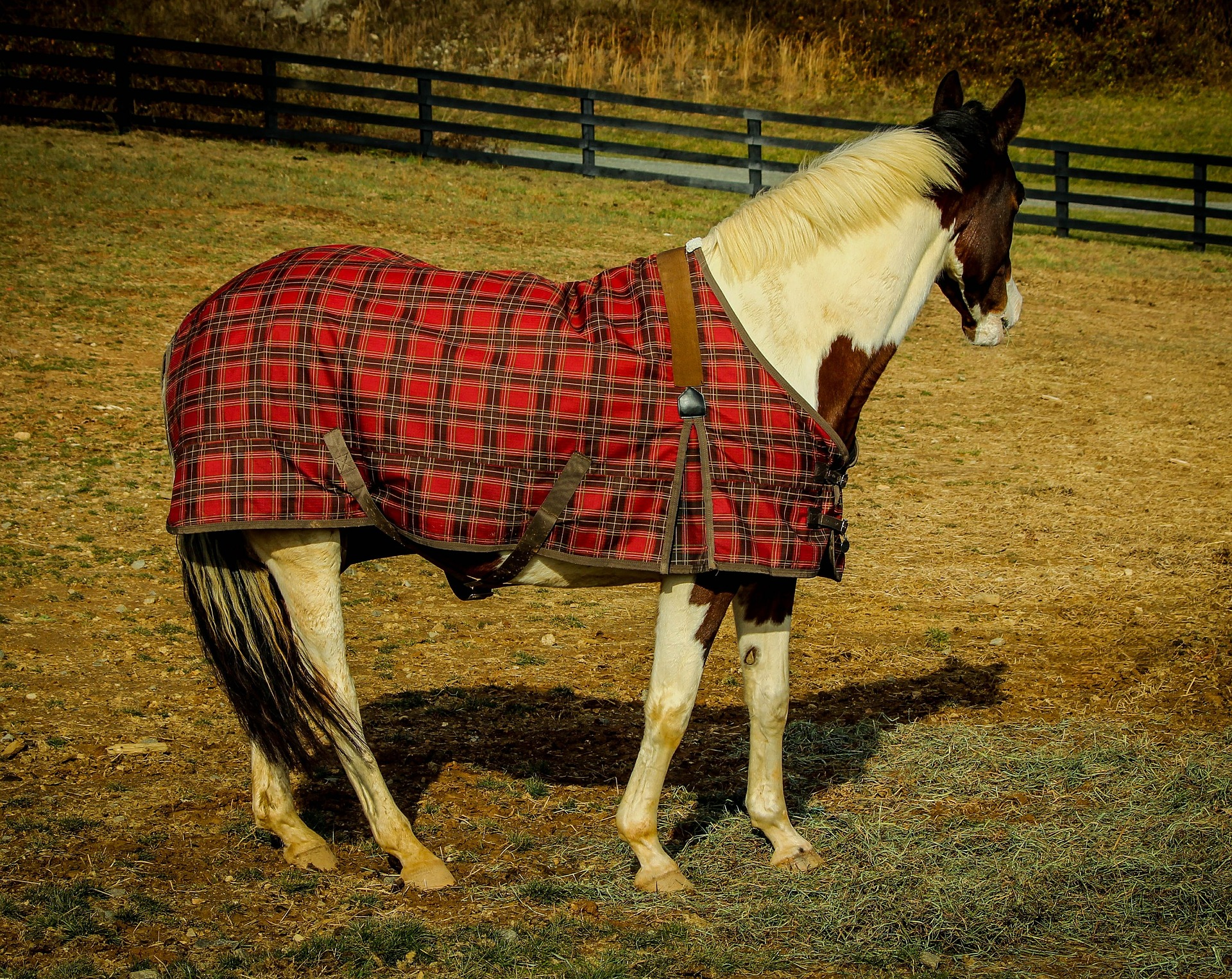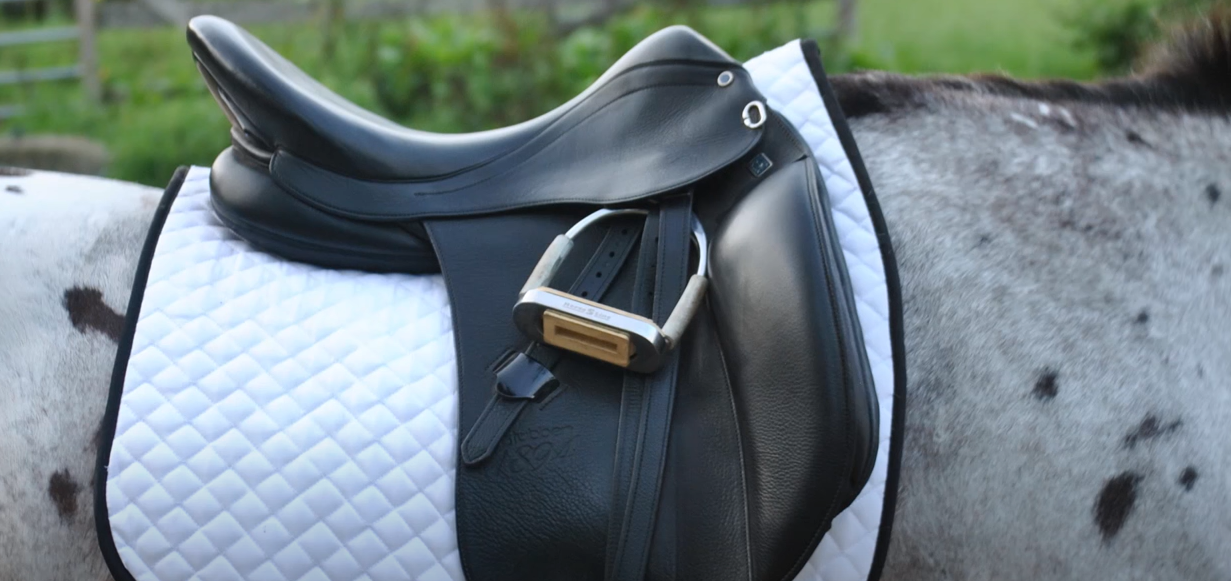You can take a horse to the water, but you can't make him drink - unless he's wearing a comfortable halter. A lot of times, horses become stubborn and difficult not because they want to, but simply because they're uncomfortable. As an owner, it's your job to identify when your steed's hardheadedness comes as the result of ill-fitting accessories.
Of the many different horse accessories that cause discomfort, the halter tops the list. Secured against your animal's snout, the horse halter can cause major pain and pressure when improperly fitted. So if you've been having trouble leading your horse on foot, our list of the best horse halter picks might help your situation.
The 5 Best Horse Halters
1. Weaver Leather Basic Adjustable Halter
Simple and straightforward, the Weaver Leather Basic Adjustable Halter uses synthetic materials that tout machine washable performance. Easy to maintain and clean, this halter features an adjustable noseband and crown piece that you can fine tune to achieve the perfect fit.
Available in six different colors, this halter proves to be a reliable workhorse for everyday applications.
Most rope halters hurt horses with pressure that presses against the horse's cheekbones and other parts of its face. But the Poly Rope Tied Halter from Tough 1 provides excellent comfort that other halters can't.
Arriving pre-tied, this rope halter lets you adjust fit and pressure to achieve more subtle cues that don't hurt your horse. Recognized as the best horse training halter, this choice reduces stress points without sacrificing the feedback necessary for learning.
Made from high quality leather, the HORZE Largo Genuine Leather Halter is often considered the best leather horse halter.
This durable choice uses extra padding along the leather crown piece and noseband to reduce pressure on your horse's nose and head. Featuring rolled edges, this premium leather halter uses a simple snap hook that lets you easily snap the halter in place or take it off.
This breakaway halter combines the best of both worlds with durable nylon halter material, webbing below the brow strap, and a leather crown. The breakaway leather crownpiece rests behind the horse's ears and snaps open when pulled with sufficient strength.
Considered one of the safest choices for more independent horses that aren't always under the owner's supervision, this high quality halter uses reinforced box stitching that keeps all other halter parts securely in place.
Although it might appear like a regular halter, the Brahma Webb Halter Bridle doubles in functionality. The halter-slash-bridle uses English bridle leather and works well for both lead training and trail riding. Many horse owners often prefer the dual functionality because of the design's ease and comfort for both you and your horse.
It also features an abundance of adjustment buckles so you can guarantee a proper, comfortable fit.
Different Types of Horse Halters
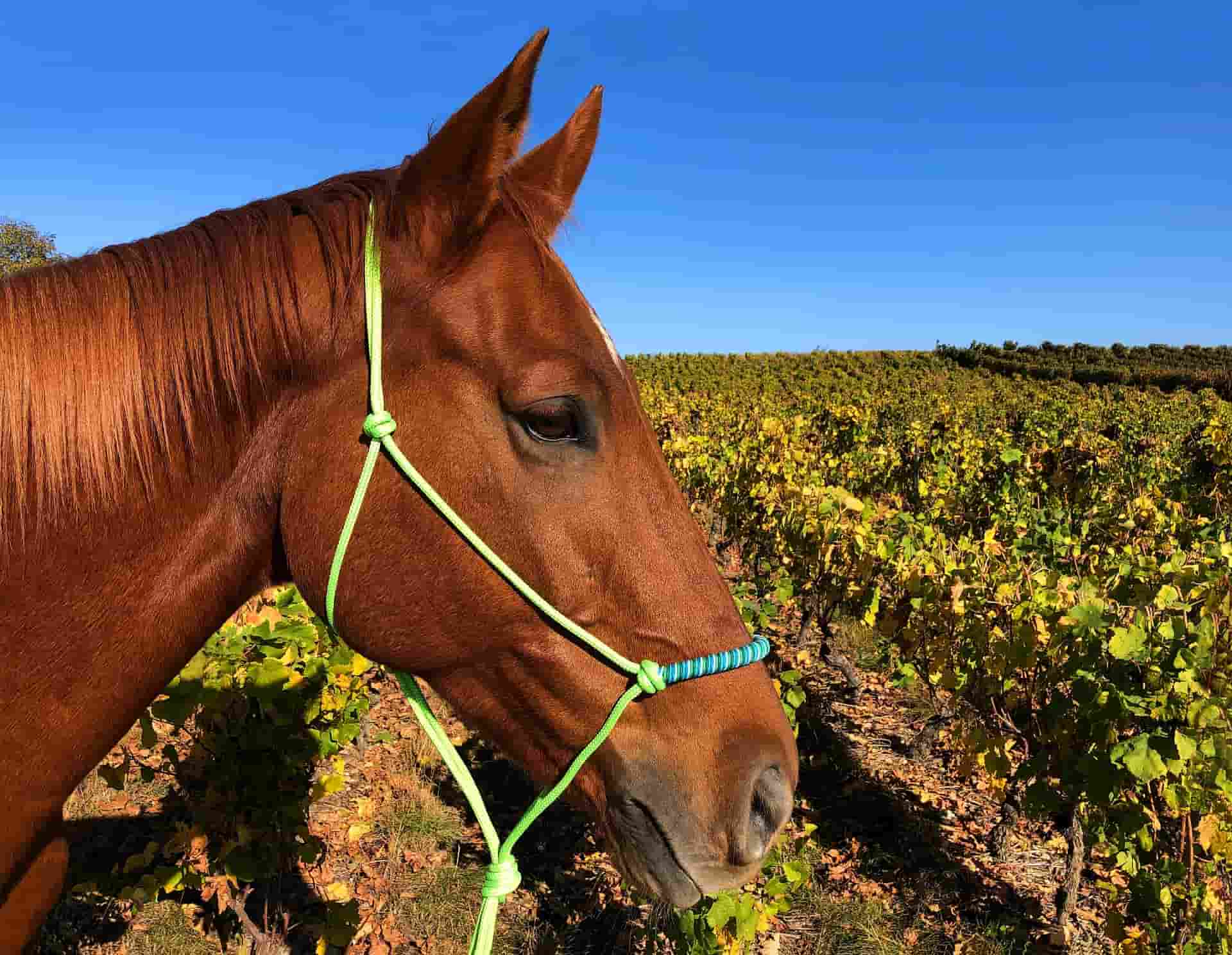
Types of halters depend on the kind of material they use and the way they secure against your horse's head. Choosing the right kind ultimately rests on the kind of work your horse performs and the animal's distinct comfort preferences.
A lot of horse owners cycle between different types of horse halters depending on their horse's tasks for the day. Some choose solely based on which type of halter their horse feels most comfortable using.
Leather Halters
As the name suggests, leather halters use leather material secured together with hardware. Many halters use leather material because of its unrivaled durability and aesthetics.
Out of the box, leather halters aren't necessarily the most comfortable. But with time and repeated use, the halter will break in and become much more forgiving.
A well-worn leather halter will behave like a second skin, offering excellent flexibility, fit, and comfort. It helps to know however that leather halters will require unique care compared to other types in order to maintain its durability and appearance. The use of a top-grade saddle soap will help a leather halter last longer.
Nylon Halters
The standard horse halter typically uses nylon. Affordable and accessible, nylon halters use colorful nylon material identical to what manufacturers use for dog collars and leashes. A nylon halter may provide okay comfort out of the box, especially since they have more room for adjustment by way of buckles and straps.
Durable and easy to clean, the nylon halter may take slightly more time to break in versus a leather halter. And because the material is particularly difficult to cut, getting the material caught in a tree branch presents a major danger.
That's why we (and many other experts) only recommend using nylon halters under the horse owner's supervision.
Rope Halters
Considered one of the most comfortable horse halters for your horse, rope halters quite literally use a rope which ties around your horse's head. Unlike store-bought leather halters or nylon halters, rope halters are made to fit your specific animal. So they tend to feel much more comfortable.
The only downside to the rope halter is that they require particular skill and experience if you want to tie one properly. Calling for technical knots and following a distinct pattern, securing a rope halter without sufficient experience may risk your horse's comfort and even its life. However some manufacturers today do offer pre-tied halters made of rope.
Generally, most owners accept that rope halters apply pressure more distinctly across your horse's face. That's why horse's that are just beginning training tend to respond best to a rope halter.
Breakaway Halters
The breakaway halter is an ingenious response to the risks of the standard halter design. Oftentimes, halters becomes the reason for horses getting their heads stuck in strange places, like tall trees and branches. When this happens, the horse is put at risk of serious injury and even death if they attempt to pull away with the halter secured in place.
Breakaway halters work by allowing animals to safely breakaway in case of an emergency. Designed with a breakaway crown that literally opens and releases the horse's head when pulled at, these halters work best in situations when you might not be able to keep a close eye on your animal.
See one in action in this video...
Manufacturers that offer breakaway halter designs usually develop their halters to release the breakaway crown after a certain level of force. This ensures that the halter stays secured to your horse's face under normal circumstances.
Specialty Halters
Some halters are designed specifically for certain functions.
The shipping halter for instance features a breakaway design that's lined with fleece. This particular choice works to keep your animal's safe well padded for a bumpy ride in a trailer. It also wicks away moisture that might build up during a hot ride. A shipping halter also comes with more buckles and loops for trailer ties.
The grooming halter features a lack of both the throat latch and jaw piece, allowing easy access for groomers to clean the jowl area. These halters are not intended for use during work or training, and should only be used under the supervision of a groomer.
Then of course, there's the personalized halter. These designs take your horse's specific measurements into consideration to reduce pressure on the horse's eyes, cheeks, ears, and its head in general. Some trail riders prefer getting customized halter-slash-bridle designs to get the best of both worlds for leading and for trail rides.
Things to Consider When Buying a Horse Halter
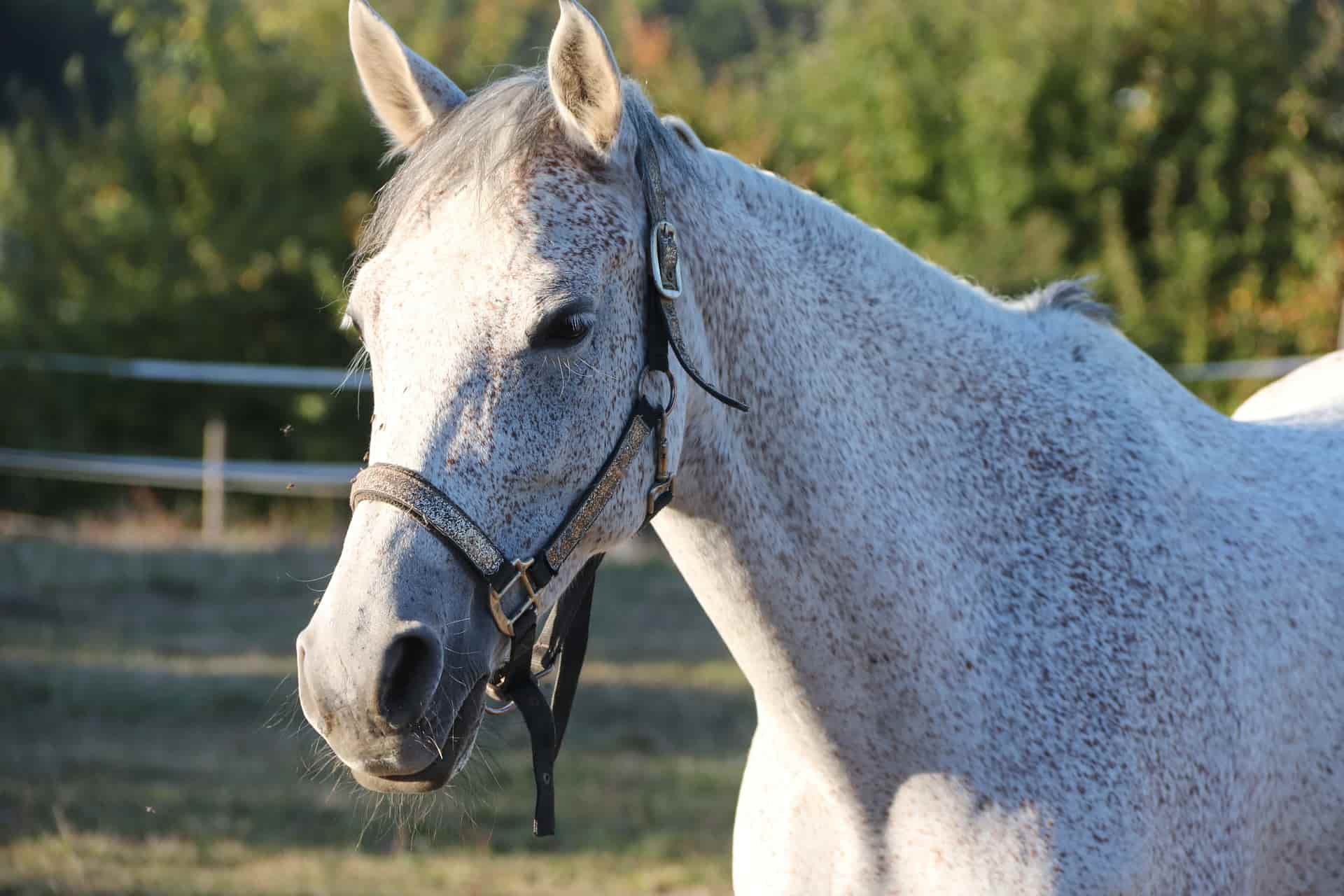
Although they might seem simple enough, horse halters actually come in a wide array of designs that could confuse any horse owner. So to make sure you're copping the right halter for your horse, here's a short list of the most essential considerations you need to account for.
Material
Every kind of material comes with its own advantages and disadvantages. Understanding the pros and cons of each material will help you determine which specific type would work best for your needs.
Leather halters provide the best longevity
Designed for years of wear and use, these halters become softer and more flexible with time. They look aesthetically pleasing, and they provide horses excellent comfort especially after being broken in.
Of course the issue with leather is that it may require some maintenance, cleaning, and unique care.
Nylon halters deliver excellent durability
They're long lasting and easy to clean, and they don't really require much care or maintenance. Available in a wide assortment of fun colors, nylon halters also provide substantial comfort.
However because nylon can be particularly strong, they're near impossible to cut in the case of an accident which has raised the question - are nylon halters safe?
As long as they're used with proper supervision, they should be just fine.
Rope halters offer supreme comfort
This is because they're designed to fit the specific animal wearing them. Although they might not appear particularly sophisticated, rope halters have earned the respect and preference of ranchers who use their horses for work around the farmhouse.
The trade-off of course is that you have to know how to tie a rope halter, which is far from simple or easy.
Fit
Depending on the type of material you choose, you should be able to determine the ideal fit. With leather halters, you can expect the accessory to loosen up to three inches with time. So at first, you'll want to get a snug halter that's neither tight nor loose if you want it to fit your horse correctly as it's used.
Nylon halters tend to remain the same fit over time, with only about an inch of difference even after months of constant wear. So with a nylon halter, you might want to consider buying something that's a little looser right off the bat.
With rope halters, the fit is determined based on the animal since these halters are custom made. Just make sure that none of the knots are digging into the horse's face, and it should serve its purpose quite well.
Generally speaking, you'll want to look for comfort features to reduce unnecessary pressure on your horse's face. A padded halter offers excellent comfort and prevents severe halter edges from boring into your animal's skin.
It also helps to choose a halter with an adjustable noseband and various other adjustable parts that let you fine tune the fit once you secure it around your horse's snout.
Halter Training
If you're a horse rider, training with a halter becomes a necessary first step before you can successfully ride your animal. By tugging on the halter, you can direct your horse, train for obedience, and teach them how to work or how to perform certain tricks and skills.
One of the most important factors of training with a halter involves halter pressure. Applying the right pressure on the right parts of your horse's face by pulling on the halter will ultimately dictate how your horse responds to training.
Most equine experts say that the best horse halter for training are those made of rope. Horses more easily pick up on the pressure of a rope halter. This is mainly because of the knots that you can use to apply halter pressure on various parts of the animal's face. As the horse progresses in training, you can move on to nylon or leather halters.
Frequently Asked Questions
How do I choose a horse halter?
Consider your purpose. Is your horse just starting out with training? In that case, they might need to start off with training halters. A rope halter works well as a beginner halter for horses because it applies more distinct pressure that horses more easily pick up on as you tug.
Are rope halters better?
Some ranchers think of the rope as a more severe halter, while others permanently stick to rope halters. Securing a rope halter to your horse requires precise knotting skills that not every owner has. Nevertheless, the rope halter fits most appropriately and works best to provide horses feedback for halter training.
What makes a good halter horse?
As a horse owner, there are a number of factors you should look into to make sure you've got a good horse halter for your animal. Proper fit, durable materials, and effectiveness in delivering palpable yet subtle cues are just some of the main considerations you may need to account for.
Are leather halters better?
A leather halter isn't necessarily better, but it does have its perks. Soft leather can be especially comfortable, and matches most leather tack. Good leather can also last for years, especially with proper care. All things considered, the best horse halters are those that elicit the proper responses from your animal without causing pain.
How do you clean a nylon halter?
Although naturally durable, improper care can make a nylon halter and lead rope frayed and unsightly. At least twice a month, wash your nylon halter with warm or hot water and hypoallergenic laundry solution to maintain its appearance and durability.
Take the Lead
Training a horse all starts with a proper horse halter. But what exactly is the best type of horse halter for your beloved beast? Whatever material and design you end up choosing, it's important to guarantee your animal's comfort by ensuring the correct fit, correct size, and sufficient feedback.
So if you were on the market for the best horse halter, make sure to consider our tips to help you find the most effective halter for your horse's safety during training.
